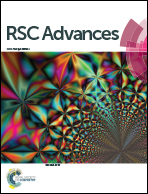Characterization and antifouling properties of polyethylene glycol doped PAN–CAP blend membrane
Abstract
The effects of polyethylene glycol (PEG) as an additive to a cellulose acetate phthalate–polyacrylonitrile blend membrane in the ultrafiltration range were investigated. Influences of both the molecular weight and concentration of PEG were examined. Ternary phase diagrams were generated to identify the domain of composition where thermodynamic instability occurred. Kinetic hindrance due to the presence of the additive was also estimated. The relative importance of thermodynamic and kinetic factors was investigated quantitatively to interpret the nature of the membrane morphology. The prepared membranes were characterized in terms of surface morphology by scanning electron microscopy, water permeability, pore density, molecular weight cut off, contact angle and breaking stress. The antifouling characteristics of the prepared membranes were evaluated in terms of the filtration of bovine serum albumin protein. Membranes with PEG 200 at concentrations of 2 wt% and 6 wt% showed the best antifouling properties.


 Please wait while we load your content...
Please wait while we load your content...